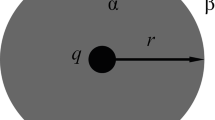Abstract
Pronounced correlations exist between many ores and the rock types in which they occur. For instance, iron-nickel-copper sulfide ores are almost exclusively located in mafic rocks, such as norites and molybdenum sulfide deposits and vein-type lead-zinc sulfide deposits occur in silicic rocks, such as granites and monzonites. Experimental investigations of pertinent systems containing sulfide as well as silicate components have demonstrated the presence of wide fields of liquid immiscibility. The solubilities of sulfides in liquid silicates are low (<1000 ppm) even at low oxygen fugacities and diminish further with increase in f02. Addition of sulfur to homogeneous “noritic-type” liquid which contains small amounts of nickel and copper produces a sulfide-oxide liquid which coexists with the silicate liquid. The silicate liquid buffers the composition of the sulfide-oxide liquid. The latter crystallizes on cooling to a mixture of magnetite and a (Fe, Ni, Cu)1−x S solid solution wich in turn decomposes to the pyrrhotite, chalcopyrite, pentlandite assemblages characteristic of Sudbury-type deposits. Liquid immiscibility fields containing coexisting silicate and sulfide-oxide liquids exist also in systems containing granitic or monzonitic as well as the sulfide components. Reactions between sulfur vapor and silicate minerals produce sulfides and oxides commonly observed in metamorphosed rocks.
Zusammenfassung
Ausgeprägte Wechselbeziehungen existieren zwischen zahlreichen Erzen und den sie umhüllenden Gesteinen. Zum Beispiel sind sulfidische Eisen-Nickel-Kupfeterze fast ausschließlich an basische Gesteine gebunden, wie Norite, während Molybdänsulfidlagerstätten, oder auch Blei-Zink-Vererzungen, in sauren Gesteinen, etwa Graniten und Monzoniten, anzutreffen sind. Experimentelle Untersuchungen an entsprechenden silikatisch-sulfidischen Stoff-systemen zeigen in augenfälliger Weise eine weitgehende Unmischbarkeit im Schmelzfluß. Die Löslichkeit von Sulfiden in Silikatschmelzen ist gering selbst bei niedriger Sauerstoffugazität und nimmt mit steigender f02 noch weiter ab. Zufuhr von Schwefel zu einer homogenen Schmelze noritischer Zusammensetzung, mit kleinen Nickel- und Kupfergehalten, führt zur Bildung einer sulfidisch-oxidischen Schmelze, die mit der Silikatschmelze koexistiert. Die Silikatschmelze puffert die Zusammensetzung der sulfidisch-oxidischen Schmelze, welche bei der Abkühlung zu einem Gemisch aus Magnetit und monosulfidischen Mischkristallen, (Fe, Ni, Cu) 1−x S, kristallisiert. Bei weiterer Temperaturerniedrigung zerfällt die Mischkristallphase zu Pyrrhotin, Kupferkies und Pentlandit, gemäß der charakteristischen Erzparagenese vom Typus Sudbury. Bereiche von miteinander unmischbaren Schmelzen existieren auch in Systemen, welche granitische oder monzonitische und auch sulfidische Komponenten beinhalten. Reaktionen zwischen Schwefeldampf und silikatischen Mineralien führen zur Bildung von Sulfiden und Oxiden, welche gewöhnlich in metamorphen Gesteinen zu beobachten sind.
Similar content being viewed by others
Literatur
Craig, J. R., Kullerud, G.: Phase Relations in the Cu—Fe—Ni—S-System and Their Application to Magmatic Ore Deposits. Econ. Geol. Monograph 4, 344–358 (1969).
Kullerud, G., Yoder, H. S., Jr.: Sulfide-Silicate Reactions. Annual Report of the Director Geophysical Laboratory. Carnegie Institution of Washington Year Book 63, 218–222 (1964).
Kullerud, G., Yoder, H. S., Jr. Sulfide-Silicate Relations. Annual Report of the Director Geophysical Laboratory. Carnegie Institution of Washington Year Book 64, 192–193 (1965).
Kullerud, G., Yoder, H. S., Jr. Sulfide-Silicate Relations. Annual Report of the Director Geophysical Laboratory. Carnegie Institution of Washington Year Book 66, 442–446 (1968).
Maclean, W. H.: Liquidus Phase Relations in the FeS—FeO—Fe3O4—SiO2-System, and Their Application in Geology. Econ. Geol. 64, 865–884 (1969).
Naldrett, A. J., Kullerud, G.: A Study of the Strathcona Mine and Its Bearing on the Origin of the Nickel-Copper Ores of the Sudbury District, Ontario. J. Petrol. 8, 453–531 (1967).
Naldrett, A. J. A Portion of the System Fe—S—O between 900 and 1080 °C and Its Application to Sulfide Ore Magmas. J. Petrol. 10, 171–201 (1969).
Author information
Authors and Affiliations
Rights and permissions
About this article
Cite this article
Kullerud, G., Moh, G.H. Das Problem „Erz-Nebengestein“ erläutert an ausgewählten Beispielen im Experiment. Mineral. Deposita 7, 271–279 (1972). https://doi.org/10.1007/BF00206788
Received:
Published:
Issue Date:
DOI: https://doi.org/10.1007/BF00206788




